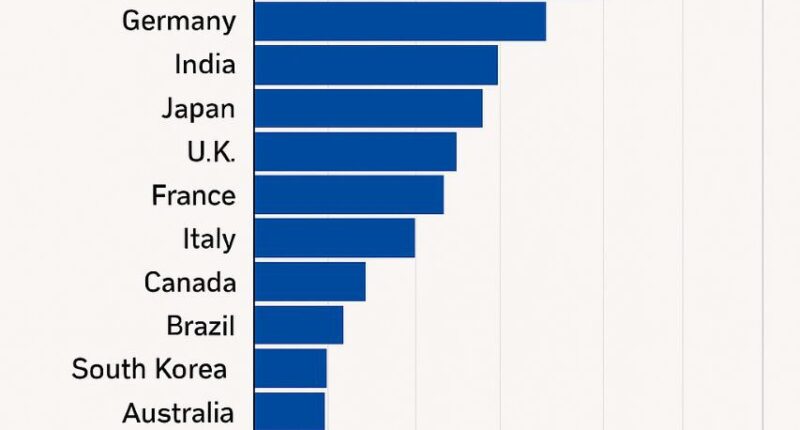The global economy is shaped by a group of powerful nations that drive innovation, trade, and financial stability. These top 20 economic powerhouses hold significant influence through their GDP, industries, and global partnerships. Let’s take a closer look at the countries leading the world’s economy.
What Makes an Economic Powerhouse?
Key Factors of Strength
An economic powerhouse is defined by a combination of high GDP, strong industries, and global influence. Factors such as technological innovation, natural resources, skilled labor, and political stability all contribute to their economic dominance.
Role in Global Growth
These economies not only shape international trade but also impact financial markets, climate policy, and technological advancement, making them essential drivers of global development.
Ranking the Top 20 Economies in the World
1. United States
The U.S. is the world’s largest economy, powered by technology, finance, and consumer spending.
2. China
China stands as a global manufacturing hub and a rising leader in green technology and digital innovation.
3. Germany
Germany dominates Europe’s economy with strengths in engineering, automotive, and exports.
4. India
India’s fast-growing services sector and large population fuel its economic rise.
5. Japan
Japan is a leader in technology, robotics, and advanced manufacturing.
6. United Kingdom
The UK’s financial services, creative industries, and pharmaceuticals keep it among the top players.
7. France
France thrives on luxury goods, aerospace, and agriculture, making it a diverse economy.
8. Italy
Italy is renowned for fashion, automotive, and a strong tourism industry.
9. Canada
Canada’s economy is supported by natural resources, energy, and services.
10. Brazil
Brazil, South America’s largest economy, relies on agriculture, mining, and energy.
11. Russia
Russia remains an energy superpower, with vast oil and gas exports.
12. South Korea
South Korea leads in electronics, semiconductors, and shipbuilding.
13. Australia
Australia benefits from mining, natural resources, and strong trade with Asia.
14. Spain
Spain’s economy thrives on tourism, agriculture, and renewable energy.
15. Mexico
Mexico’s proximity to the U.S. boosts its manufacturing and trade strength.
16. Indonesia
Indonesia, Southeast Asia’s largest economy, is driven by natural resources and a young workforce.
17. Türkiye
Türkiye combines a strategic geographic position with strong industries in textiles, construction, and defense.
18. Netherlands
The Netherlands is a European trade and finance hub, with a strong innovation sector.
19. Saudi Arabia
Saudi Arabia’s economy is oil-driven but is diversifying under its Vision 2030 strategy.
20. Switzerland
Switzerland is globally recognized for banking, pharmaceuticals, and precision manufacturing.
Conclusion: The Future of Global Economic Leaders
These top 20 economies represent the backbone of global growth. While traditional powers like the United States, China, and Germany continue to dominate, emerging economies such as India and Indonesia are gaining momentum. The future of the world economy will depend on how these nations adapt to challenges such as digital transformation, sustainability, and geopolitical shifts.









